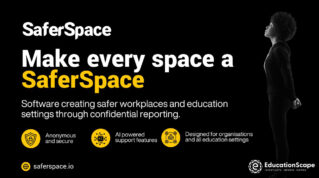We compiled Education, Disability and Social Policy 15 years ago in what were clearly more optimistic times. Looking back as we prepare the second edition to be published this spring has been a sobering experience – but an enlightening one too.
Then, the equality act had just been enacted and the ‘every child matters’ agenda was looking comprehensively at services for all children. Today, successive reforms have failed to fundamentally change a system established in the 1970s.
Faced with the three key policy problems of a demographic shift, conflicting legislation and a change in the delivery infrastructure, policy makers have instead opted for piecemeal reform.
The result is a toxic combination of frustrated professionals, disappointed families and, most importantly, inadequate support and faltering outcomes for children with SEND.
Our SEND framework, sitting alongside the provisions of the disability discrimination act and the equality act, has placed increasing pressure on local authorities just as they have lost much of their power to direct schools.
This has increasingly left them to fight parents over provision – in direct opposition to the intent of the legislation.
In short, today’s children are not being served by a system geared more to meeting individual need than to creating inclusive education environments. And the result is a system that is dangerously close to market failure.
What to do next?
We need an approach that is equal to our changed environment, rooted in an update to the ‘jigsaw of provision’. The best way to achieve this is by replacing our deficit model of ‘need’ with one informed by ‘capability’ – that is, one that focuses directly on the quality of life individuals can achieve.
This approach places its primary focus on making policy choices based on expanding individuals’ capabilities instead of simply distributing resources. It has been used widely in policy and legislation from the Future Generations of Wales Act to the Human Development Index.
But what would this look like in practice?
An end to silos
First, there would need to be a shift of the intent of the system (and accountability) from meeting individual need to proactively promoting better outcomes.
By bringing the SEND system into the mainstream of education policymaking, we can have a wider conversation about what all young people need to thrive. Providing effective support and making reasonable adjustments would still be of paramount importance, but a more inclusive environment overall would raise the threshold.
Take curriculum, for example. A capability approach would enrich the content of what young people learn with a greater emphasis on social and emotional skills, benefitting not just those with mental health conditions, but all children.
High standards for all
Second, a capability approach would remove the expectation on teachers and school leaders to be the experts on meeting all needs. Instead, all those who are actively invested in supporting children would work together to achieve this ambition, just as the children and families act intended.
Professionals across education, health and other services would actively collaborate to understand and mitigate the barriers to a child’s outcomes: poverty, insecure housing, or the legacy of the overdiagnosis of Black children as having SEN.
And no, this would not create ‘excuses’ for ‘low expectations’ but reasons for evidenced intervention and higher standards for all.
Inclusion from the top down
Third, it would put a completely different onus on government too. Its remit would be to identify and remove policies that create disincentives to inclusion.
At the broadest level, this would involve replacing the dangerous pressure of individual accountability with a collective responsibility for shared outcomes. In other words, government would need to replace competition with collaboration.
Other organisations would need to adapt too. For example, awarding bodies would have an incentive to design more inclusive qualifications and assessment processes, rather than operate a narrow sense of objective comparison.
There is broad consensus on the need for change. But setting an ambitious destination requires realism about our starting point.
Wanting all children to achieve and thrive is already fundamental to most who work in education. It’s time they were operating within a system that worked with, not against them.













Your thoughts